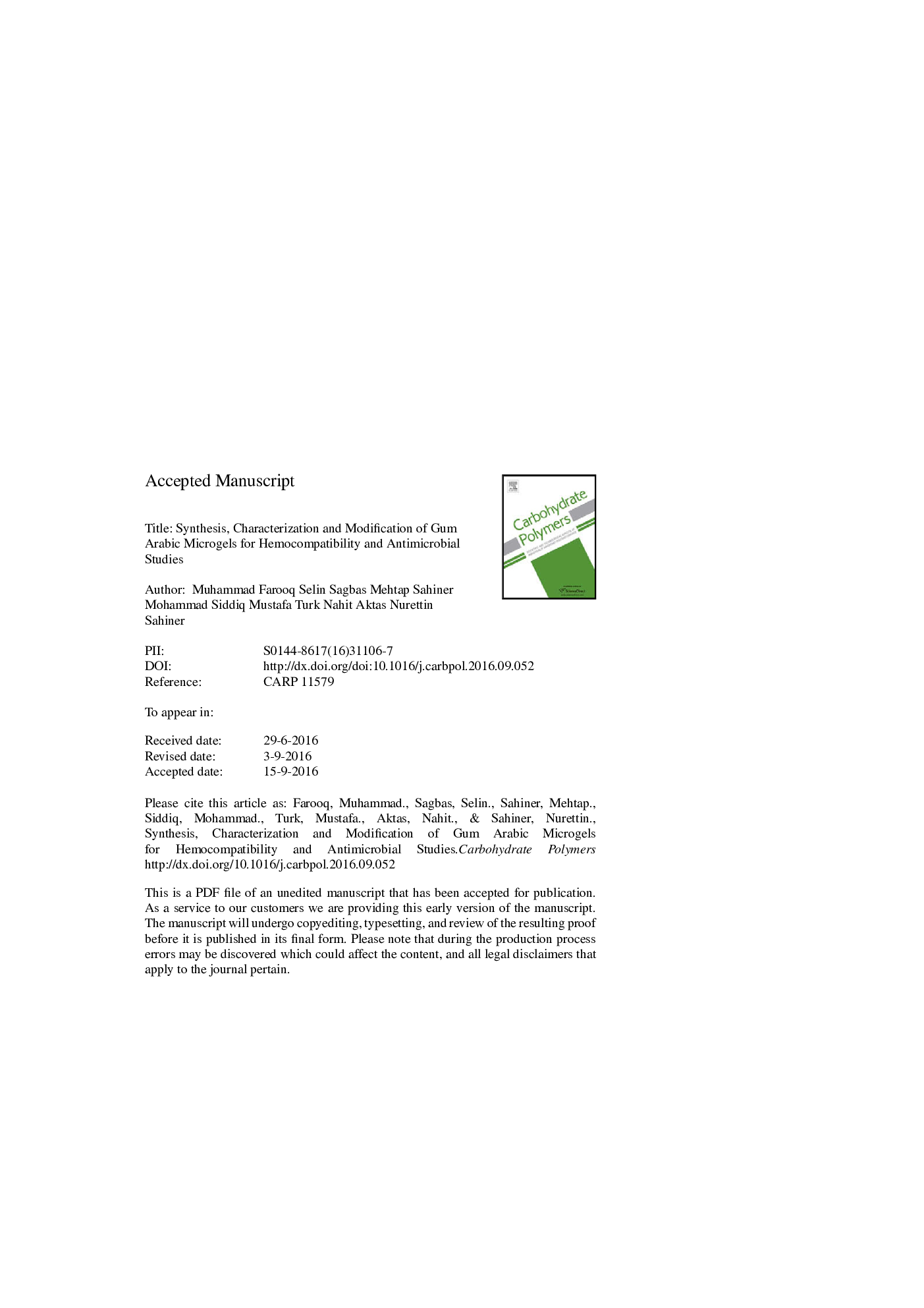| Article ID | Journal | Published Year | Pages | File Type |
|---|---|---|---|---|
| 5157499 | Carbohydrate Polymers | 2017 | 36 Pages |
Abstract
Gum Arabic (GA) microgels were successfully prepared via reverse micellization method with high yield (78.5 ± 5.0%) in 5-100 μm size range using divinyl sulfone (DVS) as a crosslinker. The GA microgels were degraded hydrolytically 22.8 ± 3.5% at pH 1 in 20 days, whereas no degradation was observed at pH 7.4 and pH 9 at 37 °C. By using diethylenetriamine (DETA), and taurine (TA) as chemical modifying agents, GA microgels were chemically modified as GA-DETA and GA-TA, and the zeta potential values of 5.2 ± 4.1 and â24.8 ± 1.3 mV were measured, respectively in comparison to â27.3 ± 4.2 mV for GA. Moreover, blood compatibility of GA, GA-TA, and GA-DETA microgels was tested via in vitro protein adsorption, % hemolysis ratio, and blood clotting index. All the microgels were hemocompatible with% hemolysis ratio between 0.23 to 2.05, and the GA microgels were found to be highly compatible with a blood clotting index of 81 ± 40. The biocompatibility of GA, GA-DETA and GA-Taurine microgels against L929 fibroblast cells also revealed 84.4, 89.1, and 67.0% cell viability, respectively, at 25.0 μg/mL concentration, suggesting great potential in vivo biomedical applications up to this concentration. In addition, 5 and 10 mg/mL minimum inhibition concentrations of protonated GA-DETA microgels (GA-DETA-HCl) were determined against E. coli and S. aureus, respectively.
Related Topics
Physical Sciences and Engineering
Chemistry
Organic Chemistry
Authors
Muhammad Farooq, Selin Sagbas, Mehtap Sahiner, Mohammad Siddiq, Mustafa Turk, Nahit Aktas, Nurettin Sahiner,
